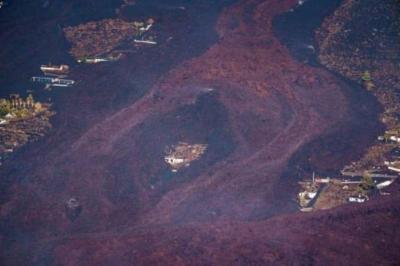Authorities in the Spanish Canary Islands announced that the lava flow from the Cumbrevieja volcano, which has been erupting for 10 days, reached the sea late Tuesday to Wednesday, warning of the risk of toxic gas emissions resulting from the molten lava meeting ocean waters. The Canary Islands Volcanology Institute (Involcan) tweeted shortly after midnight (Tuesday 22:00 UTC) that "the lava flow has reached the sea at Playa Nueva."
The Cumbrevieja volcano began erupting on September 19. By Tuesday afternoon, the lava flow was 800 meters away from the Atlantic Ocean, but the speed of its advance has varied significantly over the past few days to the extent that at one point it seemed to have stopped, making it nearly impossible to predict when the lava would meet the ocean. Experts are concerned about the contact between the lava and water due to the potentially harmful gases and particles that could be emitted as the molten lava cools in the water.
For this reason, the local government issued a decision prohibiting entry to the area where the lava is expected to reach, defining the restricted zone as "a circle with a radius of one nautical mile." On Tuesday, authorities announced a budget of 10.5 million euros to provide direct assistance to victims of the volcanic eruption, enabling them to purchase alternative housing as they watch their homes disappear under the lava flow.
Authorities declared a state of natural disaster on this island, which has a population of 85,000, as the volcanic eruption has destroyed 589 buildings (not all are residences) and covered 258 hectares of land with lava. La Palma primarily depends on banana farming and tourism. There have been no reported deaths or injuries from the eruption, but more than 6,000 people have been forced to evacuate their homes.




